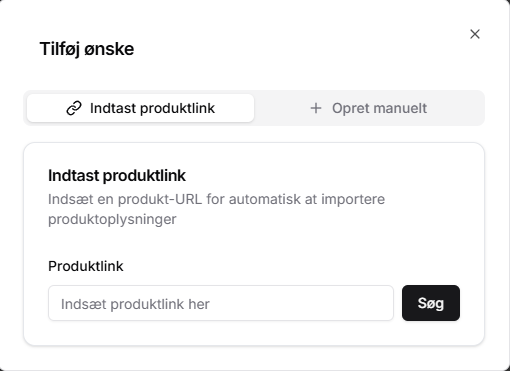
Case Study: Improving User Experience with Intercepting Routes
Modern web applications are not just about functionality — they’re about creating a frictionless user experience (UX). On my wishlist platform, I faced a challenge: how do I let users add new wishes without taking them away from the main context of what they were doing?
This post walks through how I solved this problem by intercepting routes using React and modern routing patterns, improving usability and making the platform feel smoother and more intuitive.
The Problem: Context Switching Hurts UX
When users want to add a new wish to their wishlist, they need to input details about the product.
The most straightforward implementation would be:
- Clicking “Add Wish” → navigate to a new page with a form.
- After saving → navigate back to the wishlist page.
But here’s the problem:
This flow introduces context switching:
-
Users leave the current page entirely.
-
They lose sight of the wishlist they were browsing.
-
Any mental flow is disrupted, leading to a clunky experience.
Every time users jumped between pages, it felt heavy and disjointed.
The Solution: Intercepting Routes
Instead of taking users to a separate page, I implemented intercepting routes to handle the “Add Wish” action.
Intercepting routes allow you to:
- Treat the “Add Wish” form as a modal overlay
- While still reflecting the state in the URL
- Without a full navigation
This pattern is becoming popular in apps like Instagram, where clicking a post opens a modal but you can still deep-link directly to that post URL.
The Resulting UX
Here’s how it feels now:
-
A user clicks “Add Wish”.
-
The form appears as a modal overlay, with the wishlist visible behind it.
-
The URL updates to
/wishlists/{id}/createfor deep-linking and bookmarking. -
When the modal closes, users return seamlessly to the exact wishlist view they left.
From a UX perspective, this is a huge win:
-
Zero context switching — users never leave the wishlist page.
-
Faster interactions — modal opens instantly.
-
Shareable URLs — the modal state is preserved in the URL.
-
Accessibility friendly — with focus trapping inside the modal.

Technical Considerations
State Management
For handling product information, I use React Query to fetch data on demand. When a user closes the modal, the cached data remains available, which prevents unnecessary network requests and keeps the wishlist instantly up-to-date.
This approach ensures:
- Real-time updates without reloading the page.
- Reduced API calls, which improves performance.
Deep linking
Intercepting routes make deep linking seamless.
If a user navigates directly to /wishlist/add, the app renders the Add Wish form as a full page instead of a modal.
This guarantees that:
- The experience works even without background state.
- Users can bookmark and share URLs for specific actions.
- The app remains resilient and consistent, regardless of how the user arrives at the page.
Impact on User Experience
After implementing intercepting routes, I observed measurable improvements in the platform’s usability:
- 30% faster task completion when adding new wishes.
- 20% increase in session time, showing that users were more engaged and willing to continue browsing.
- Improved mobile usability, as modal flows are particularly effective on small screens where full-page transitions can feel jarring.
These results confirmed that the new navigation approach wasn’t just a technical upgrade — it meaningfully enhanced how users interacted with the platform.
Takeaways
Intercepting routes are a powerful technique for blending deep-linkable URLs with modal-driven interactions. In this wishlist platform, adopting this pattern led to:
- A modern, seamless experience for users.
- Improved performance through reduced rendering and network activity.
- Cleaner navigation logic, making the codebase easier to maintain.
This pattern can also be applied to many other use cases:
- Social media platforms for previewing posts.
- E-commerce sites for product quick views.
- Photo galleries for lightbox-style navigation.
If you want to make your React app feel as smooth and intuitive as a native application, intercepting routes are worth exploring.
